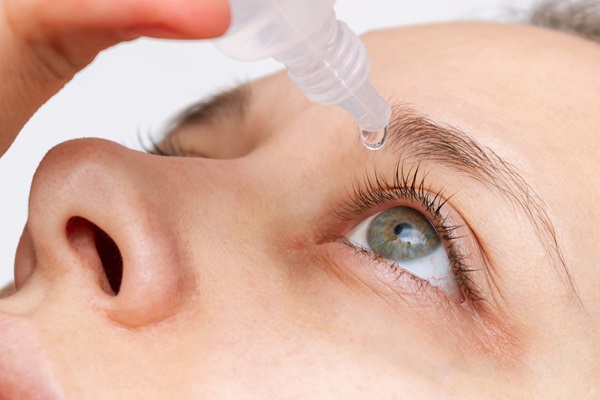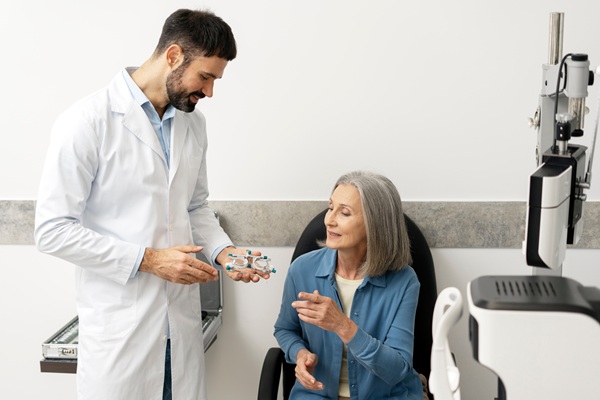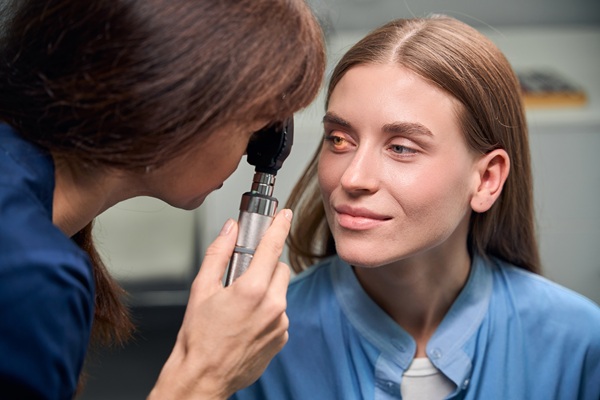Effective Red Eye Treatment: What Optometrists Recommend

The whites of the eyes can turn red for many reasons, some of which resolve independently without any treatment. However, red eye treatment is recommended when symptoms last more than two days. If you are experiencing red eye, an optometrist will work to diagnose the cause and relieve the symptoms effectively. They can also provide tips on how to prevent red eye from returning.
Symptoms of red eye
Red eye, or bloodshot eyes, may occur alongside other symptoms such as eye pain, itching, tenderness, and swelling. The eyes may also leak discharge that ranges in consistency from goo-like to crusted over. Vision changes like eye floaters, blurred vision, and light sensitivity may occur. That said, it is also common for patients to develop red eye and not experience any discomfort.
Common causes
Red eye can result from something as mild as seasonal allergies, styes, or dry eye. Sometimes, according to Healthline, it is merely a result of wearing contact lenses, staring at screens, or rubbing the eyes too much or for too long. More serious causes of red eye include:
- Blepharitis. A chronic, noncontagious eye condition marked by eyelid inflammation
- Conjunctivitis. A contagious infection of the eyeball and inner eyelid, more commonly known as pink eye
- Keratitis. An ulcer that forms on the cornea
- Subconjunctival hemorrhage. Results from a blood vessel breaking in the eye
- Eye injury. Such as due to a fall, animal scratch, foreign object, etc
With many potential causes ranging from mild to severe, it is best to consult an optometrist for red eye treatment if the condition does not improve in 48 hours. If the patient sustained a known eye injury, visit a hospital emergency room immediately.
Red eye treatments from an optometrist
An optometrist can assess the patient’s eye and diagnose the cause of red eye. As with any other condition, the diagnosis will inform the treatment. Common optometrist-recommended red eye treatments include:
Artificial tears and eye drops
Artificial tears or other eye drops can lubricate dry and irritated eyes, making it an effective red eye treatment. An optometrist can recommend over-the-counter (OTC) artificial tears best suited to the patient’s needs. Other times, as per Medical News Today, prescription eye drops such as the following may be needed for effective red eye treatment:
- Antibiotic eye drops. To fight infections, such as in cases of pink eye.
- Prescription artificial tears. To lubricate the eye more effectively than OTC formulas.
- Glaucoma eye drops. To reduce pressure in the eye from glaucoma-related red eye.
Oral medications
Optometrists may prescribe oral antibiotics to treat bacterial pink eye, blepharitis, and stubborn styes. (Doxycycline is a common one.) They may also recommend OTC pain medication such as ibuprofen and other non-steroidal anti-inflammatory drugs (NSAIDs) to ease inflammation.
Cold or warm compresses
Eye compresses can alleviate the symptoms of red eye. An optometrist typically recommends closing the eye and placing a cold or warm compress over it for patients with pink eye, styes, and allergies. Apply the compress a few times a day for about 10 to 15 minutes each time.
Temporary lifestyle changes
Optometrists may recommend temporary changes to the patient’s lifestyle as they recover from red eye and the condition that caused it. For patients with pink eye and styes, this often means increasing how often they wash their hands, change their pillowcases and towels, and wear makeup. It is also recommended to limit eye irritation, no matter the cause of the patient’s red eye. If applicable, wear frequently cleaned glasses instead of contacts until symptoms improve or go away completely.
Tips for red eye prevention
The best red eye treatment is prevention. An optometrist can help patients prevent red eye after it resolves, as well as work to stop it from occurring in the first place. Some common tips include not touching or rubbing your eyes to avoid contamination and irritation.
Although wearing glasses instead of contacts is recommended as a temporary lifestyle change during red eye treatment, doing so long-term can help prevent red eye from recurring. Similarly, if one does not want to forgo makeup as a permanent lifestyle change, they can try practicing better hygiene with their makeup products, brushes, and other applicators.
Get effective red eye treatment
If you have been dealing with red eye, visit an optometrist for effective red eye treatment. At Texas Optical, we can isolate the cause and work to remedy it through OTC or prescription medications, as well as lifestyle changes. Contact us today for an appointment in our Dallas office.
Request an appointment here: https://www.texasoptical.net or call Texas Optical at (214) 771-7333 for an appointment in our Dallas office.
Check out what others are saying about our services on Yelp: Read our Yelp reviews.
Recent Posts
Red, itchy eyes can affect your everyday comfort and reduce overall well-being. It is important to seek effective vision care from the first sign of irritation. Proper attention to symptoms, underlying causes, and healthy habits ensures stronger long-term eye health and greater day-to-day clarity. Redness and itchiness often stem from several common triggers. These include: Allergic…
New spots or shadows drifting across vision can be unsettling, and sudden changes sometimes require emergency eye care to protect long-term sight. Many floaters are harmless, but others signal serious problems with the retina or internal eye structures. Understanding when floaters are normal and when they point to a true eye emergency helps patients act…
Glaucoma treatment plays a vital role in preserving vision and protecting the optic nerve from further damage. Many patients rely on daily eye drops to manage intraocular pressure, but these medications can sometimes come with side effects. Understanding how to recognize, minimize, and communicate about these effects supports long-term success and comfort with treatment. While…
Progressive lenses offer clear vision at near, arm's length, and far distances without the visible lines found in bifocals. They provide a smooth change in power from top to bottom, which means the eyes can focus comfortably throughout the day. With the right fit and guidance from an optometrist, progressive lenses help reduce eye strain…


